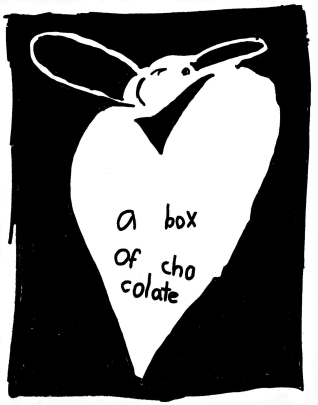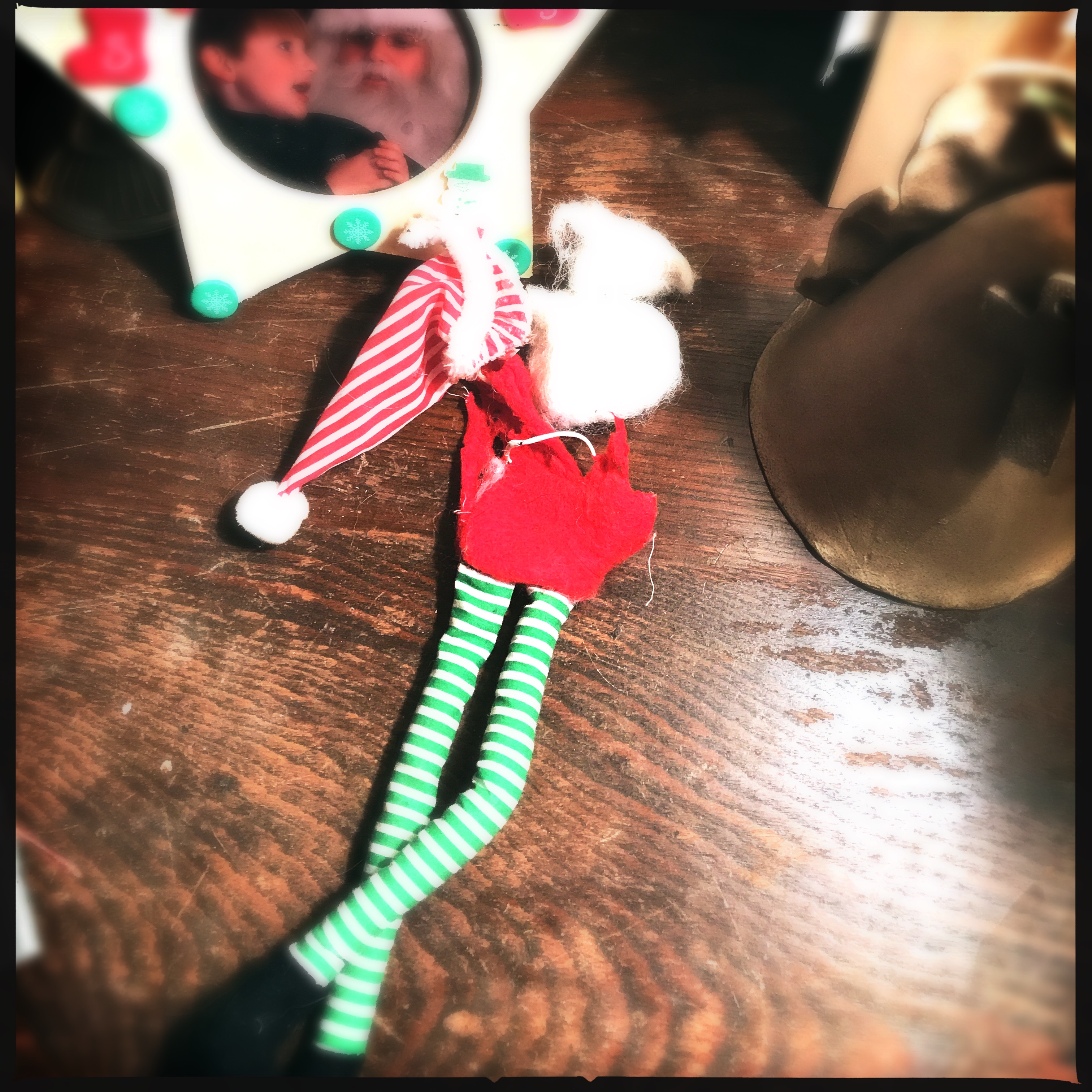
He thought his third wife was “the one,” and for a while she was. But, to be fair, so were wives one and two, as would be four (and probably five; I wouldn’t know, we lost touch). “The one” ultimately had nothing to do with the wives and everything to do with him.
But wife number three came closest to helping him recognize himself, at least for a little while. And as the marriage neared the 12-month mark, his mother, hoping his self-discovery might stick, pulled out a treasure she had saved for decades, carefully wrapped in tissue and tucked in the drawer of a hallway chest.
It was a triple-strand necklace of paper beads, each bead hand-rolled from a strip of magazine paper and secured with glue, the strands tied together at each end with messy, first grade knots. He had been so proud of it, his mother pointed out, as she shared this once-private story with a group of mostly strangers, crowded around a too-small table on a restaurant deck, drinking beer to celebrate the first anniversary (paper) of a marriage that would, unfortunately, last less than three years.
I remember listening to my friend’s mother and thinking of the vast and still-growing archive that my own mother was building, two deep hallway drawers dedicated to her two daughters’ life’s work: clumsy clay angels, macaroni puppets, and indecipherable handmade cards, lying side-by-side with diplomas and tassels from our college mortarboards.
A decade later, I was sitting at another table, indoors this time, with Bernard’s mother. She was teaching me to hand-knot pearls we’d bought earlier that day at Gloriana’s (“the oldest bead store in Santa Fe,” she wanted me to know). We had walked the mile from their family home to the square, down Paseo de Peralta, on a warm June day, seven months into my first pregnancy.
She wanted me to see the Santa Fe her son had known growing up, before movie stars and real estate developers moved in. While we walked, she told me about the time Bernard, third of her four boys, and her mother, whom Bernard called Omi, had walked from the house to the square in the late 1960s, sent on a shopping mission to buy dress shoes.
“Bernard refused to wear anything but red sneakers, so I said to my mother, ‘you take him,’ because he would do anything for Omi. They came home with a red balloon and no shoes. Eigenwijs. Hard-headed. He has always been this way,” she said. And I thought: I am marrying Ferdinand the Bull.
At Gloriana’s she showed me how Bernard’s father selected beads, the things he looked for in determining quality. We made our purchases, walked back home, and settled at a small card table in the studio Bernard’s grandfather built in the early 1920s.
The first strand of beads became a bracelet, though it was too long, the beads loose, and I never wore it. By the second try, I’d gotten the hang of things, and at the end I had a necklace to show off (one I still wear), along with a dozen or more stories in my head: How Omi, who chose to speak nothing but Dutch, taught Bernard to sew and to carve wood. How Bernard learned metal casting in high school and spent months perfecting a ring that his mother kept in the drawer of a hallway chest, because it was a gift to her and she wasn’t parting with it.
“You are taking the smartest of my boys,” she said, as we worked in parallel, using ultra-fine needles to slip knots one-by-one down the silk cords. “Not the most educated, but always the most resourceful.”
I thought of my friend, the paper necklace, his wives, and his mother.
These memories came back recently the way most memories do, triggered by something seemingly unrelated, two weeks before Christmas.
The holiday decorations, dragged down from the attic the weekend after Thanksgiving, were finally sprung from their plastic box captivity and put on display: the terracotta creche (a gift from my godmother, for my first apartment); the fisherman’s basket creche (that belonged to my father’s parents), absent either Joseph or a wise man (it’s hard to tell them apart); the sparkly nutcracker (from my daughter’s 6-year-old Christmas wish list); the 100-year-old Sint-Nicolaas (a gift from Omi to Bernard); the tiny blue and pink plastic angels that my mother let me buy at Dan West in 1973, the year she wanted to go green and have a live tree that could be planted in the yard after the holiday.
Each item has a story (or two) that gets retold every Christmas. Those 50 cent plastic angels, for example, far outlived the potted tree, which didn’t survive being transplanted. On my mother’s last Christmas, when my children and I were camped at her house, waiting for Bernard tried to finish home renovations, those faded plastic angels captured my then three-year-old son’s imagination: “Look, BeBe; these angels svimming! Svim! Svim!” he said to my bald, dying mother, as he dipped the plastic angels in her water glass and fished them back out again.
No Christmas could be complete, now, without those tiny angels.
And then there are the elves.
Elf on the Shelf entered our world when my son was in first grade. His teacher read the book to the class and then brought an elf into the classroom. They named him Stanley.
Soon, elves began appearing in my children’s friends’ homes, and my children (who were 4 and 6 at the time) started wondering aloud if they had been naughty or were somehow undeserving. “Why won’t Santa send an elf to our house, too?”
“What are we going to do about those FUCKING elves?!” another hold-out mother shouted into the phone one day. “I’m not spending THIRTY FUCKING DOLLARS on a FUCKING PLASTIC ELF!”
So we hit up Oriental Trading, she and I. We bought four fucking plastic elves, two with green shirts and two with red, so we could each have a pair (one red, one green) for our two children. Why didn’t they look like everyone else’s elves? Because these were VERY SPECIAL elves, of course.
It seemed a good idea at the time, but a fair amount of wine was involved.
That year, and for the next several, the elves brought small Advent gifts and led my children through a parade of Christmas magic, to the very best of my ability. The elves’ names were Quintarius Alfonsus LaRue (LaRue, for short) and Bob. LaRue was my daughter’s elf, and Bob my son’s. And while there are a hundred things I could complain about (waking at 3 a.m., having forgotten to move the fucking elves – again!), the notes my children wrote to them – secret, private notes to give to Santa – are some of the dearest treasures I’ll ever have.
So in this year’s annual holiday decorating, along with the various creche sets, the nutcracker, Sint-Nicolaas, and the angels, out came the elves. My daughter placed them on high perches, seated on two columns in our entry hall (“so they can watch the tree – like you used to tell us they did.”)
Only Bob and LaRue were a bit worse for the wear, and their bendy metal legs and arms didn’t hold as steady as they once did. A few days after the seasonal debut, we found Bob lying sprawled on the floor. My daughter propped him back in place, reinforcing the rig with Scotch tape.
Alas, it wasn’t enough.
 Bob’s fate, you won’t be surprised to learn, was dealt by the Frye boot-eating dog, Callie. I know because I caught her in the act, early enough to preserve some of Bob’s suit and body, but too late to salvage any of his plastic head.
Bob’s fate, you won’t be surprised to learn, was dealt by the Frye boot-eating dog, Callie. I know because I caught her in the act, early enough to preserve some of Bob’s suit and body, but too late to salvage any of his plastic head.
“NOOOOOO!” my daughter cried when told of the crime, even though Bob wasn’t hers.
“Mom, it’s a stupid plastic elf, made in China; it doesn’t matter,” said her brother, master of teenage-boy bravado.
But I know better, because I know him – this tall, lanky, almost-man. I have 17 years’ worth of cards, self-portraits, clay jewelry, and notes to Santa, couriered by Bob the Elf.
And that’s what transported me back, thinking of paper beads, red sneakers and balloons, hand-cast rings, and hallway drawer archives. How mothers have a certain pride of authorship. How stories from childhood can bring us back to our true selves in ways that either enable or cripple, hold hostage or set free. How these stories are never ours alone, but shared histories with multiple narrators – sometimes with artifacts handed across generations.

6 responses to “Farewell, Bob the elf.”
What wonderful Christmas memories. I love the description of the ones you hold dear. So sorry about Bob… 😢
Our holiday was relatively quiet with all adults around tge tavle this year.
LikeLike
One of the hazards of commenting from my phone… accidentally hitting the Post key as I was trying to correct mistakes lol.
Anyway… it was supposed to say around the table this year. I used my stepmother’s china in honor of my father who allowed me to have it when she passed. It was lovely and made him happy. Hope you have a Happy New Year and a blessed 2019! 💜💙💛
LikeLike
The phone is such a blend of blessing and curse, isn’t it? Happy New Year to you also. Wishing you much happiness in 2019. ❤️❤️
LikeLiked by 1 person
I so enjoy your writings, hope your New Year is a great one.
LikeLike
Thank you, Betty! Wishing you a happy 2019 also.
LikeLike
Ah, the effing elf! And those notes the kids write. And the 3 am shot of adrenaline as I wake gasping from a much-needed dream because I suddenly realize that I never moved the elf. (I only forgot it once this year which I consider a huge victory…) Thank you, as always, for saying the important things (and so beautifully). xo
LikeLike